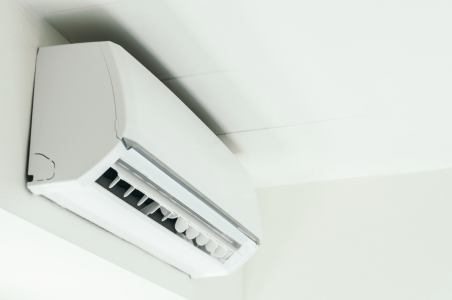Discover the shocking cost of running your air conditioning during summer
By
VanessaC
- Replies 10
As the sun shines bright across Australia, so does the cost of keeping our homes cool.
With energy prices soaring in recent years, many Australians are left wondering if the comfort of air conditioning is worth the hefty price tag.
This concern has only been amplified since the 20-25 per cent energy price hike (depending on the provider) that took effect across large parts of the country on July 1, 2023.
To shed light on this issue, Compare the Market conducted an analysis of the costs associated with different types of air conditioners and fans.
Chris Ford, a representative from the organisation, noted that many households are still unsure about how to stay cool without breaking the bank.
'Electricity prices have surged higher than they've been in the last couple of years, and that's due to a range of factors, but one of the main reasons is because we're too reliant on coal and we're transitioning to renewable energy,' he explained.
'While switching to greener energy will permanently drive down power bills and keep them lower, we don’t have enough of it yet.'
'But families shouldn’t suffer through the heat to save money, they just need to be smart about their usage and ensure they’re on a competitive plan.'
Various factors can impact a household's energy bill, including the frequency of use, the size and capacity of the air conditioner relative to the area being cooled, the energy-efficiency rating of the appliance, and the energy retailer's usage rates.
All these factors can result in an energy bill that’s a bit too much for already strained budgets. So, how can we save where it counts?
According to Ford, one of the most cost-effective ways to keep cool is by using fans.
The Department of Climate Change, Energy, the Environment and Water estimates that it costs approximately 2c/hour to run a fan.
However, the more fans you use, the higher your electricity bill will be.
On the other end, the most expensive air conditioning unit analysed by Compare The Market was a large Reverse Split Unit.
The Fujitsu Reverse Cycle Split System reportedly costs about $1038.40 a year to run.
'Window box air conditioners came out as one of the most expensive options of those we analysed,' he explained.
'While a little outdated, they're still common in many apartments and smaller homes.'
'These units typically have a lower energy star rating, which is why they can cost more to operate than ducted or reverse split units,' Ford explained.
The Gree C5.3kW Cool Only Box, a window box model analysed in the study, costs $758.85 a year to run.
Regardless of the type of air conditioning unit you have, Ford emphasised that usage habits can significantly impact your energy bill.
He recommended setting the temperature around 25 [degrees Celsius] on warm days.
'Be aware that for every degree cooler you set the temperature, you could be increasing your electricity usage by 10 per cent.'
'That really adds up if you’re running more than one system at a time.'
Ford also shared several tips to help Australians save money on their energy bills:
 Do you have other tips on how to stay cool during the summer? Share them with us in the comments below!
Do you have other tips on how to stay cool during the summer? Share them with us in the comments below!
With energy prices soaring in recent years, many Australians are left wondering if the comfort of air conditioning is worth the hefty price tag.
This concern has only been amplified since the 20-25 per cent energy price hike (depending on the provider) that took effect across large parts of the country on July 1, 2023.
To shed light on this issue, Compare the Market conducted an analysis of the costs associated with different types of air conditioners and fans.
Chris Ford, a representative from the organisation, noted that many households are still unsure about how to stay cool without breaking the bank.
'Electricity prices have surged higher than they've been in the last couple of years, and that's due to a range of factors, but one of the main reasons is because we're too reliant on coal and we're transitioning to renewable energy,' he explained.
'While switching to greener energy will permanently drive down power bills and keep them lower, we don’t have enough of it yet.'
'But families shouldn’t suffer through the heat to save money, they just need to be smart about their usage and ensure they’re on a competitive plan.'
Various factors can impact a household's energy bill, including the frequency of use, the size and capacity of the air conditioner relative to the area being cooled, the energy-efficiency rating of the appliance, and the energy retailer's usage rates.
All these factors can result in an energy bill that’s a bit too much for already strained budgets. So, how can we save where it counts?
According to Ford, one of the most cost-effective ways to keep cool is by using fans.
The Department of Climate Change, Energy, the Environment and Water estimates that it costs approximately 2c/hour to run a fan.
However, the more fans you use, the higher your electricity bill will be.
On the other end, the most expensive air conditioning unit analysed by Compare The Market was a large Reverse Split Unit.
The Fujitsu Reverse Cycle Split System reportedly costs about $1038.40 a year to run.
'Window box air conditioners came out as one of the most expensive options of those we analysed,' he explained.
'While a little outdated, they're still common in many apartments and smaller homes.'
'These units typically have a lower energy star rating, which is why they can cost more to operate than ducted or reverse split units,' Ford explained.
The Gree C5.3kW Cool Only Box, a window box model analysed in the study, costs $758.85 a year to run.
Regardless of the type of air conditioning unit you have, Ford emphasised that usage habits can significantly impact your energy bill.
He recommended setting the temperature around 25 [degrees Celsius] on warm days.
'Be aware that for every degree cooler you set the temperature, you could be increasing your electricity usage by 10 per cent.'
'That really adds up if you’re running more than one system at a time.'
Ford also shared several tips to help Australians save money on their energy bills:
- Know the size of the room you’re looking to cool. When you go to a supplier or retailer, it pays to know the room’s length, width and ceiling height for a single unit or space of the house for the air conditioning system.
- Make sure your home is adequately insulated. Ceiling, wall and floor insulation can have a massive effect on air conditioning.
- If your home has a lot of windows that let in light and heat: shut blinds and curtains, install outdoor awnings and close doors and windows. These are all cheaper alternatives.
- If your home is equipped with solar panels, remember that running the air conditioner during the day when your system generates power could lower your overall bill.
- Make sure you are on an electricity plan that is affordable and think about comparing your current plan against others.
Key Takeaways
- Running air conditioning in the summer can significantly impact electricity bills, especially since energy prices have recently spiked.
- Compare the Market's analysis, which highlighted the cost differences between various air conditioning units and fans, with fans being a more cost-effective cooling option.
- The Fujitsu Reverse Cycle Split System was cited as one of the most expensive air conditioning units to run, costing approximately $1038.40 a year.
- Chris Ford from Compare the Market suggested setting air conditioners to 25 degrees Celsius and cautioned that each degree cooler can increase electricity usage by 10 per cent.








